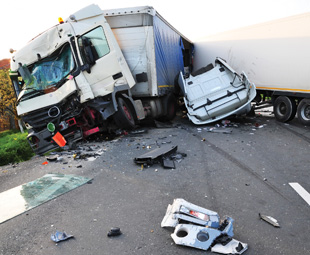Road safety, oh road safety

While some go to pains to preach road safety and the fundamental simplicity behind it, others are literally pained because of it.
Early this year, FOCUS received a letter from a disgruntled reader who, making her way down to Cape Town shortly after the festive season, witnessed the terrifying antics of a bus driver who could only have been borderline homicidal. I say that because there can be few other explanations for someone who, entrusted with a literal busload of lives, could take the risks described by our reader (see FOCUS February).
I too, during my December pilgrimage to far and interesting corners of our country, witnessed many an incident of reckless driving and vehicle mismanagement. These should have resulted in both drivers and vehicles being removed from the roads. Permanently.
Road safety is something consistently spoken about passionately, no, feverishly, by those who care. Yes, accidents do happen – daily. But barring natural disasters, each one could, when you get right down to it, have been avoided, usually by adjusting the slightest of actions.
A short while ago, I received a press release about an interesting study published in the International Journal of Injury Control and Safety Promotion, entitled: Identifying the factors contributing to the severity of truck-involved crashes. Authored by Chunjiao Dong, Stephen H. Richards, Baoshan Huang and Ximiao Jiang, the study raises some interesting points.
The research aimed to estimate the effects that traffic, drivers, geometry and environmental factors have on the severity of crashes involving trucks. The results were conveyed in relation to four crash severity categories – fatal/incapacitating (FI), non-incapacitating (NI), possible injury (PI), and no injury/property damage only (PDO).
Data on crashes involving trucks that occurred between 2005 and 2009, on the Tennessee state highway system, was obtained from the Tennessee Department of Transportation crash records information system. Only crash records involving at least one truck were selected – a total 1 134 crashes involving trucks over the five years (101 single-vehicle crashes and 1 033 multi-vehicle crashes).
So what did the report conclude?
First, truck crashes on roads with lower traffic volume noticeably increased the probability of fatality – a finding the authors expected as lower traffic volume increases the likelihood of higher speed, increasing crash severity. Concurrently, the results indicate that the probabilities of FI, NI, and PI injuries increase with increasing speed limits.
As the percentage of trucks increases in the car/truck mix, the probabilities of FI and NI injuries also increase. (This is attributed to the chance of a collision with a truck increasing as the proportion of trucks in a traffic stream, of a particular volume, increases.)
Second, driver gender and his or her condition have significant impacts on crash severity. The findings suggest that male drivers are more likely to be involved in an FI injury crash. Analysis of the driver condition factor demonstrates that alcohol and perception-altering drugs are dangerous for drivers; with the risk of a FI injury crash increasing seven-fold, for example.
With vehicle characteristics, trucks with combination-type bodies were found to increase the probability of fatal injury crashes, owing to lower acceleration rates and longer vehicle lengths.
The statistical results show that some improper manoeuvres increase the probability of a PDO crash, while the risk ratio of using a safety belt improperly in FI, the crash model is four-times greater than the reference condition.
Weather was a particular environmental factor found to be statistically significant, increasing the FI and PI crash probabilities while having only a slight effect on NI crashes.
Finally, among the geometry factors considered in this study, the effect of shoulder type on crash severity was found to be significant, with pavement and gravel shoulders increasing the probability of an injury. In addition, rural roadways were found to have a higher probability of an injury crash compared to the urban roadway.
It worries me deeply that, despite the research, road accidents and fatalities continue to increase unabated. Reading these findings also proves that, logically and indeed realistically, small changes in attitude are all that is required from both car and truck drivers to make the roads safer.
Of course, the road-safety brigade has been banging its drum about these facts for decades …
Published by
Focus on Transport
focusmagsa





 FUSO: Driving the Future of Mobile Healthc
FUSO: Driving the Future of Mobile Healthc



 New Electric Van Range Unveiled!
New Electric Van Range Unveiled!  A brand
A brand




 Wondering about the maximum legal load for a
Wondering about the maximum legal load for a 
 The MAN hTGX powered by a hydrogen combus
The MAN hTGX powered by a hydrogen combus


 Exciting News for South African Operators
Exciting News for South African Operators






